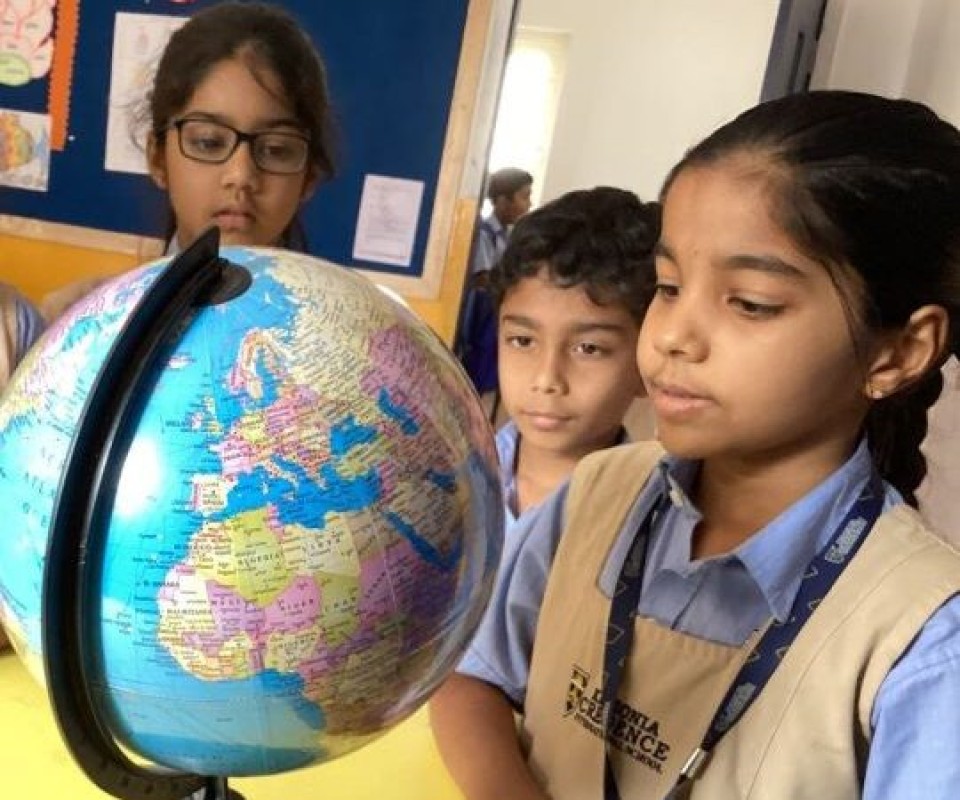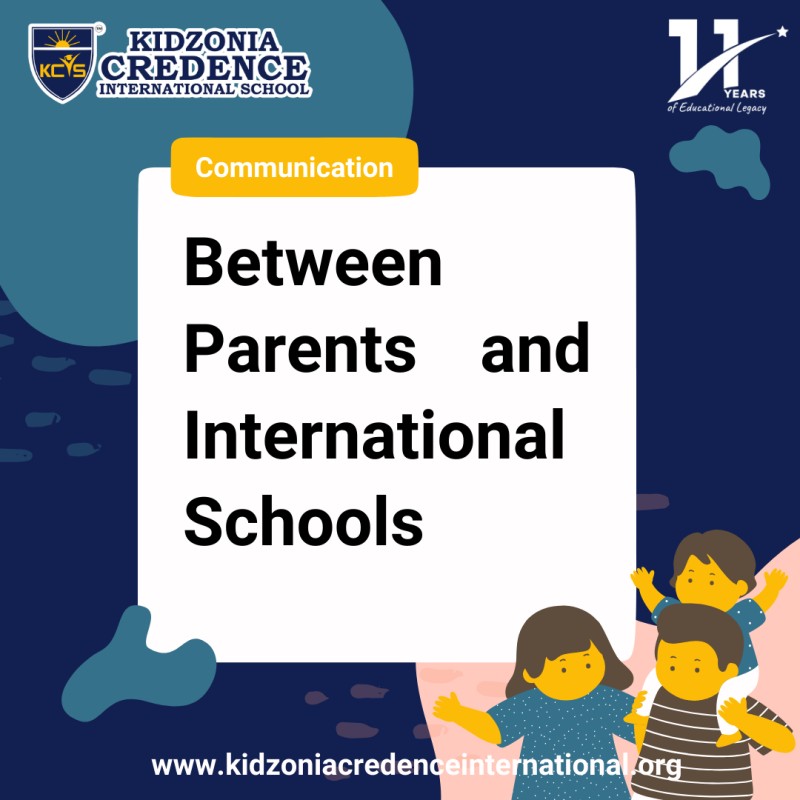By KIDZONIA
Why Cross-Cultural Communication is Essential in Today’s World

Hey there, as an international promoter for education, I’ve had the incredible opportunity to witness the power of cross-cultural connections. Today, I want to share a small experience of mine. And what better place to talk about than the vibrant city of Mumbai, where I grew up! Growing up in Mumbai’s diverse and vibrant cross-cultural environment, I had a wonderful time learning all sorts of languages, feasting on mouthwatering food from different cultures, and more. I can feel comfortable just like home no matter where I was. I believe that’s what we all need in this globally interconnected modern age.
We are becoming more connected and globalized by the day. When cultures mingle and borders fade away, the significance of cross-cultural communication simply cannot be emphasized enough. It opens doors to new perspectives, fosters understanding, and helps us navigate the exciting tapestry of our diverse world with empathy and curiosity.

We all come from different backgrounds. Cross-cultural communication is all about how we share and connect with each other, even with our diverse cultural differences. It’s like a bridge that helps us exchange information, ideas, and values in a way that we can truly understand and appreciate one another. So, whether it’s chatting with someone from a different country, learning about new traditions, or even just having a friendly conversation with someone who has a different perspective, cross-cultural communication is what keeps our world buzzing with diversity and understanding. It’s like a language of its own, bringing us closer and helping us build connections that transcend borders and boundaries.
In this blog, we will explore why cross-cultural communication is not just beneficial but essential in fostering understanding, promoting cooperation, and navigating the complexities of our diverse world.
Bridging Cultural Gaps
We are fortunate to experience a remarkable tapestry of diverse cultures. From different languages and traditions to unique perspectives and values, our global community is a vibrant mosaic. To truly embrace and appreciate this diversity, we need to bridge the gaps that may exist between cultures. This is where cross-cultural communication steps in, serving as a vital tool for fostering inclusivity. By actively engaging in conversations and interactions with individuals from different cultural backgrounds, we can break down barriers, challenge stereotypes, and build connections based on understanding and respect. Through open-mindedness, empathy, and a willingness to learn, we can create a more inclusive world where everyone’s voices are heard, valued, and celebrated.
Imagine you’re in a bustling city, surrounded by people from all walks of life, speaking a multitude of languages. It’s a beautiful melting pot of diversity, but sometimes language barriers can make connecting with others a bit challenging. That’s where cross-cultural communication swoops in like a superhero, saving the day! Promoting active listening, empathy, and respect for different perspectives can help us overcome barriers. By engaging in open dialogue and seeking to understand each other’s cultural backgrounds, we can bridge gaps, break down stereotypes, and foster a sense of unity and shared understanding, leading to stronger relationships and collaborations.

Enhancing intercultural competence
Intercultural competence is the ability to interact and communicate effectively with people from different cultural backgrounds. It involves being aware of our own cultural biases, understanding and respecting the values and customs of others, and adapting our communication styles to bridge cultural gaps. It’s like having a cultural “toolbox” that helps us navigate diverse contexts with sensitivity and openness. Developing intercultural competence is crucial in today’s globalized world, as it allows us to build meaningful connections, avoid misunderstandings, and foster mutual understanding and cooperation across cultures.

It’s like being a cultural chameleon, adapting and learning from each encounter to create positive and inclusive interactions. Cross-cultural communication is like putting on a pair of empathy goggles that help you see things from someone else’s point of view. It’s all about being open-minded, respectful, and sensitive to different cultures. By honing your cross-cultural skills, you become a master of adaptability, smoothly navigating diverse environments while keeping everyone’s uniqueness in mind. It’s like having a secret weapon that brings people together, fostering understanding and creating a vibe of respect and chill vibes wherever you go.
Promoting cultural exchange and learning
Cultural exchange is like a mind-expanding adventure that takes you beyond your comfort zone and challenges your preconceived notions. It’s a journey that opens your eyes to new perspectives, traditions, and ways of thinking. By immersing yourself in different cultures, you break down walls of ignorance and gain a deeper understanding of the world. It’s like adding vibrant colors to your mental palette, broadening your horizons, and becoming a more enlightened and open-minded individual. It’s not just about acquiring knowledge, it’s about embracing the richness of diversity and embracing the beauty of our interconnected world.
Cross-cultural communication is a lively marketplace where ideas, knowledge, and traditions are exchanged freely. It’s a vibrant exchange that allows us to learn from one another and appreciate the richness of different cultures. By engaging in cross-cultural conversations, we open doors to new perspectives and ways of thinking, enriching our own understanding of the world. It’s like a never-ending classroom where everyone becomes both student and teacher, fostering mutual respect, growth, and a celebration of our shared humanity. The more we share, the more we learn, and the more we can create a world that embraces and cherishes the beautiful tapestry of diverse cultures.

Fostering global business and collaboration
Globalization has transformed the business landscape, breaking down geographical barriers and creating a truly interconnected world. As companies expand their reach into international markets, effective cross-cultural communication has become essential for success. Understanding cultural nuances, customs, and communication styles is crucial for building trust, establishing strong business relationships, and navigating diverse market dynamics. It’s like a key that unlocks doors to new opportunities, enabling businesses to adapt their strategies and products to meet the unique needs and preferences of customers from different cultures. Cross-cultural communication is a competitive advantage that drives innovation, fosters collaboration, and propels businesses towards sustainable growth in the global marketplace.

Understanding cultural nuances and communication styles is like having a secret weapon for successful collaborations and business relationships across borders. It allows us to navigate the intricate dance of international negotiations with finesse. By recognizing and respecting cultural differences, we can adapt our communication approaches, building rapport, and establishing trust. Whether it’s understanding the importance of hierarchy, indirect communication, or the significance of personal relationships, cultural awareness helps us avoid misunderstandings and fosters more effective and harmonious interactions.
Resolving conflicts and promoting peace
Cross-cultural communication plays a vital role in conflict resolution and peacebuilding, serving as a bridge between individuals and communities with diverse backgrounds. By fostering understanding, empathy, and active listening, it helps to de-escalate tensions and create an environment conducive to peaceful dialogue. Effective cross-cultural communication enables us to navigate sensitive topics, challenge stereotypes, and find common ground based on shared values and aspirations. It’s like a universal language that promotes reconciliation and mutual respect, fostering a sense of unity and collective problem-solving.
Misunderstandings and cultural differences have unfortunately led to conflicts throughout history. Recently, misinterpretation of cultural practices has caused tensions, like the “headscarf debate” in various countries. Effective cross-cultural communication has the power to bridge divides and promote harmony. Through open dialogue, cultural awareness training, and respectful engagement, people can overcome stereotypes, correct misconceptions, and find common ground. It’s through this communication that individuals and communities can build relationships based on understanding, empathy, and appreciation for diverse perspectives. By valuing each other’s cultures and embracing effective communication, conflicts rooted in misunderstandings can be transformed into opportunities for learning, growth, and peaceful coexistence.

Conclusion
In today’s interconnected world, cross-cultural communication is of paramount importance. It allows us to navigate diverse environments, build meaningful relationships, and foster mutual understanding. By embracing cultural differences, actively listening, and adapting our communication styles, we can break down barriers, challenge stereotypes, and promote harmony.
By fostering cross-cultural communication, we’re not just learning about different cultures; we’re building bridges of understanding and acceptance. It’s like planting seeds of harmony and cooperation in our global garden. When we open our minds and engage in meaningful conversations, we create a space where everyone’s voice is valued. Together, let’s break down barriers, challenge stereotypes, and celebrate the beauty of our diverse world. Through cross-cultural communication, we can create an inclusive and harmonious global community where understanding and unity prevail. Let’s embark on this journey together, embracing the richness of our differences and creating a brighter future for all.












